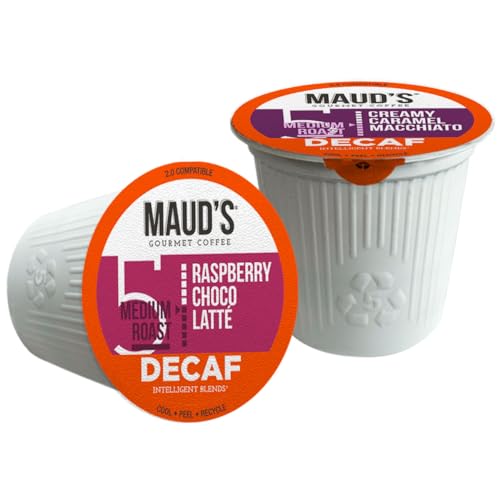The Science and Taste Behind Decaf coffee pods: What You Need to Know
Decaf coffee pods have become increasingly popular for those looking to enjoy the taste of coffee without the effects of caffeine. But what exactly goes into making decaf coffee pods, and how do they differ in taste from regular coffee pods? In this article, we delve into the science behind decaf coffee pods and provide you with all the information you need to know.
The Science Behind Decaf Coffee Pods
Decaf coffee pods are made using beans that have undergone a decaffeination process to remove most of the caffeine. There are several methods for decaffeinating coffee beans, including the use of solvents, carbon dioxide, and water. Each method involves extracting caffeine from the beans while preserving the flavor compounds that give coffee its unique taste.
One common method of decaffeination is the solvent-based process, which involves soaking the beans in a solvent such as ethyl acetate or methylene chloride to extract the caffeine. The beans are then steamed to remove any remaining solvent, resulting in decaffeinated beans that can be used to make coffee pods.
Another method is the carbon dioxide (CO2) process, which involves using pressurized carbon dioxide to extract caffeine from the beans. This method is considered more environmentally friendly than solvent-based processes and is known for preserving the flavor compounds in the beans, resulting in a more flavorful decaf coffee.
The water process is yet another method for decaffeinating coffee beans, which involves soaking the beans in water to extract the caffeine. This method is also considered environmentally friendly and preserves the flavor of the beans, resulting in a high-quality decaf coffee.
The Taste of Decaf Coffee Pods
Decaf coffee pods are known for their smooth and mellow flavor, with a slightly lower acidity than regular coffee pods. The decaffeination process can affect the taste of the coffee, with some methods preserving the flavor compounds in the beans better than others. As a result, decaf coffee pods made using the CO2 or water process are often considered to have a more flavorful and aromatic taste compared to those made using solvent-based processes.
One thing to note is that while decaf coffee pods remove most of the caffeine, they still contain a small amount of caffeine – typically around 3mg to 4mg per pod. This means that while decaf coffee pods are a great option for those looking to reduce their caffeine intake, they may not be suitable for those who are sensitive to caffeine or require complete caffeine avoidance.
FAQs about Decaf Coffee Pods
Q: Are decaf coffee pods completely caffeine-free?
A: While decaf coffee pods remove most of the caffeine, they still contain a small amount of caffeine – typically around 3mg to 4mg per pod.
Q: How do decaf coffee pods differ in taste from regular coffee pods?
A: Decaf coffee pods have a smooth and mellow flavor, with a slightly lower acidity than regular coffee pods. The decaffeination process can affect the taste of the coffee, with some methods preserving the flavor compounds in the beans better than others.
Q: Which decaffeination method produces the best-tasting decaf coffee pods?
A: Decaf coffee pods made using the CO2 or water process are often considered to have a more flavorful and aromatic taste compared to those made using solvent-based processes.
Q: Are decaf coffee pods suitable for those who are sensitive to caffeine?
A: Decaf coffee pods may still contain a small amount of caffeine, so they may not be suitable for those who are sensitive to caffeine or require complete caffeine avoidance.
Decaf coffee pods offer a great option for those looking to enjoy the taste of coffee without the effects of caffeine. By understanding the science behind decaf coffee pods and the different methods of decaffeination, you can make informed decisions about the decaf coffee pods you choose to enjoy.
“All images and products featured on this Blog.troca.cafe are the property of their respective owners. All rights to these materials are acknowledged and reserved.”
